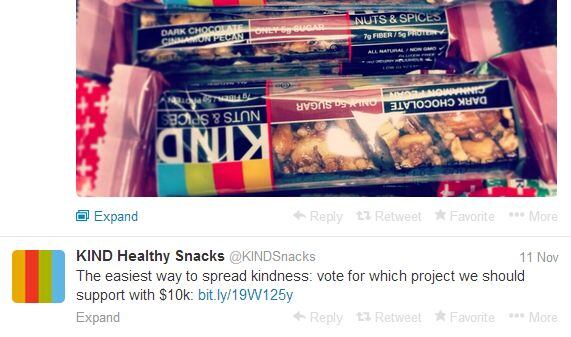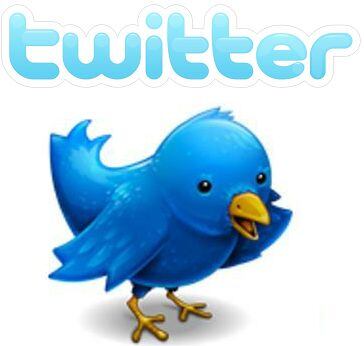All of these are reasonable goals (including the last one, as you’ll find out what works eventually), says Jenny Westerkamp, RD, the author of ‘You are what you Retweet: 140 social media rules to eat by’ and a speaker at FoodNavigator’s Food Vision 2014 event in Cannes on March 31 to April 2 (click here for full details).
However, it’s important to think about what you are trying to achieve and tailor your activities accordingly, even if you can’t immediately see a return on your investment, points out Westerkamp, who manages social media strategies for Chicago-based CJK foods and is president of the Chicago Food and Nutrition Network.
Forging relationships online
The good news is that small businesses have several advantages over big corporate rivals when they are competing for attention in social media circles, she contends.
For a start, brands and companies have personalities, and just like people, if they won’t shut up, spam you with stuff you’re not interested it, or try and sell you things you don’t want, they’ll lose your friendship.
And an entrepreneur running a start-up is a much more convincing ‘personality’ than a multibillion dollar corporation trying to be your new best friend - by virtue of necessity - as he or she probably doesn’t have the cash to pay someone else to send out tweets, update the blog, share photos and engage in other brand-building activities, says Westerkamp.

“Smaller companies can take a more personal approach; they have their own tribes. They also show what you can do without much time or money - regular but short updates, pictures, anecdotes, and stories from behind the scenes, things that bring you into that brand’s world.
“It can be much harder for a big food company to be likeable. However, if you’re a larger brand, you can get around this problem by using more user-driven content, so there’s more of a pull than a push. In general, people don’t like social media posts that seem automated or scheduled.”
People don’t like social media posts that seem automated or scheduled
However, companies of all sizes such as Chobani, KIND Healthy Snacks and Starbucks have found creative ways to engage with consumers by creating “real experiences” on social media platforms such as Twitter, she says.
KIND for example, recently set up an online initiative enabling people to send flowers to a friend, while Starbucks has just launched its Tweet a Coffee initiative (click here) whereby US customers can sync their Starbucks accounts to their Twitter accounts and tweet to @tweetacoffee with the Twitter handle of a recipient, which will send them a $5 e-gift (click here).
Campbell Soup, meanwhile, has set up a holiday-themed initiative for its Homestyle soups using photo-sharing site Pinterest giving 15 consumers the chance to win $500 airline gift cards if they pin up photos that remind them of home to tie in with a video the company has produced featuring a family getting ready for a son to arrive home for the holidays.
Joining the conversation?

As for ‘joining the conversation’ - a favorite phrase in social media circles - one thing large companies could do more is practice what they preach and engage in difficult conversations about their technologies, products, ingredients and brands on social media, says Westerkamp.
Take GMOs, for example. While big food companies have pumped millions into generic against GMO labeling and helped fund generic websites run by trade associations that provide information on biotechnology, individual brands have not actively, publicly and transparently engaged in the debate with consumers.
And this may help to explain why so many consumers remain suspicious about the technology, claims Westerkamp.
“Sometimes big brands don’t want to engage directly as they are scared, they can’t always guide the conversation, and they are not in control. They are also in a difficult position as some of them own smaller organic brands that promote the fact they are non-GMO.”
But if high-profile brands individually came out talked on social media sites and in other arenas about the risks and rewards of GMOs and why they are using them in their products, the conversation might be very different, she says. “They are missing an opportunity.”
Who should ‘do’ social media?

So who should take charge of social media for your business? The CEO? The intern? The marketing manager? An outside agency?
There is no correct answer, suggests Westerkamp, but whoever is in charge needs to be able to respond quickly should a customer service issue arise, and know enough about what’s going on to give accurate information, so should either be a decision maker in the company or have access to one.
At Food Vision 2014, Westerkamp will cover:
- What Generation Y expects – how they engage with food brands in social networks
- What the best food brands are doing to create consumer conversations and drive social engagement
- Why ‘brands’ need to become ‘personalities’ able to interact, share and forge relationships in social spaces
- When to talk and when to listen – what you can say and what you can learn on social media’s ‘two-way street’
To read about how ConAgra Foods tackles “social listening”, click here.
To find out how Mondelez International is leveraging Twitter’s analytic capabilities and boosting engagement, click here.
For more on why Anheuser-Busch thinks Facebook now beats any US broadcast network in terms of consumer reach when marketing brands such as Budweiser and Bud Light, click here.
To find out whether brands are getting some decent bang for the bucks they spend on paid-for (‘promoted’) tweets, click here.
To see why Dannon made the decision to handle all of its Twitter activities in-house rather than using an agency, click here.
For more on why McCormick CEO Alan Wilson thinks photo-sharing site Pinterest "provides an opportunity for consumers to become engaged with our brands in more authentic and compelling ways", click here.
Click here to find out more about Food Vision 2014.
Click here to read more about Jenny Westerkamp, RD.

